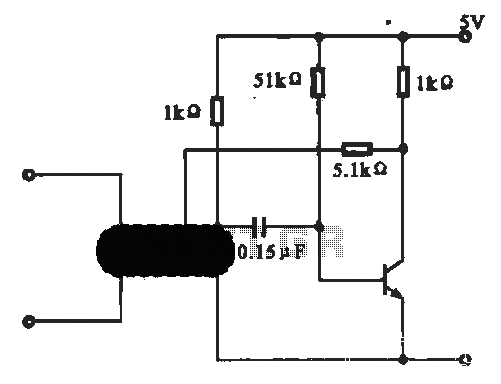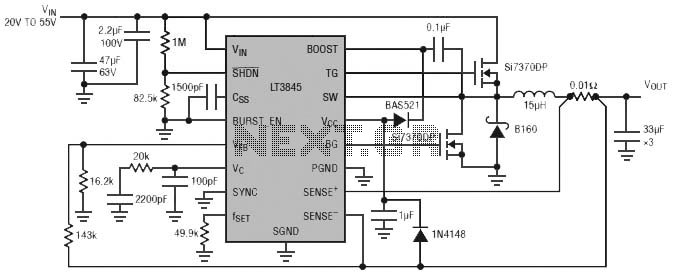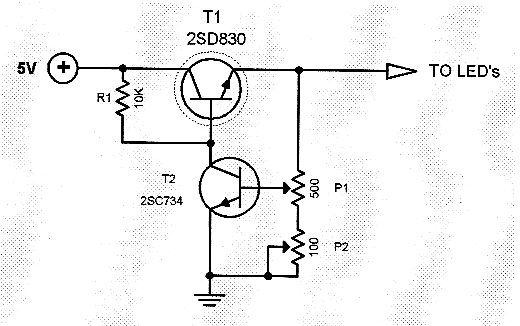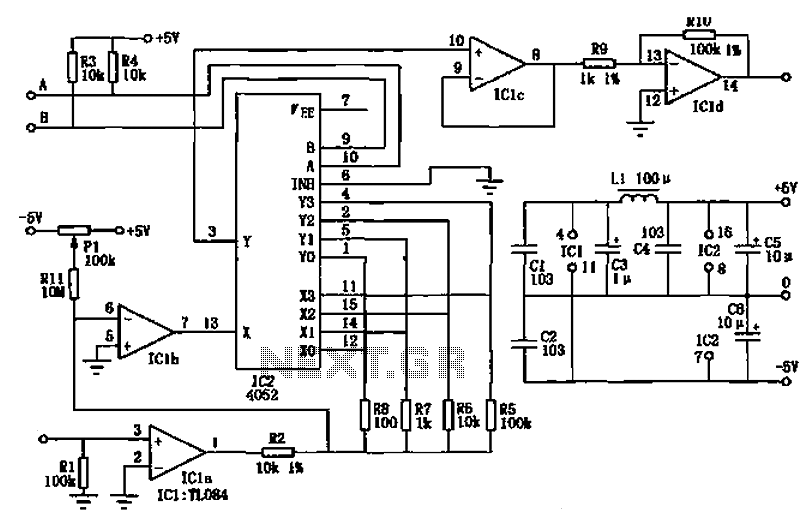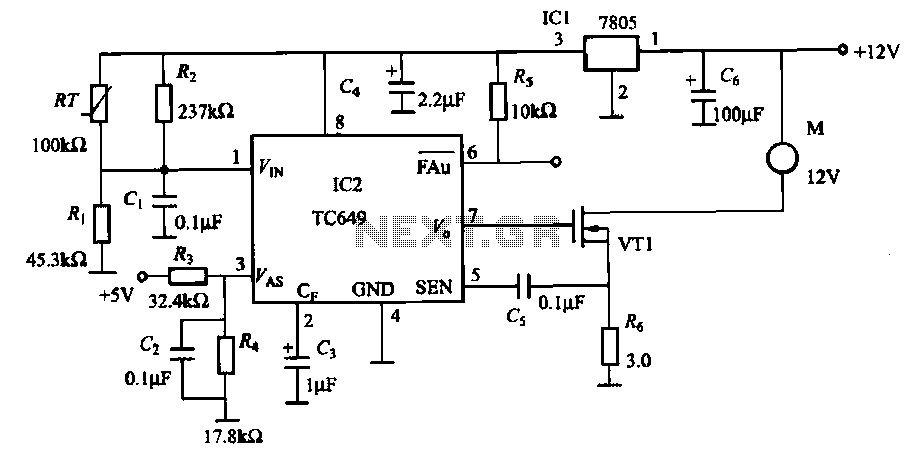
Automotive Audible-Turn Indicator Circuit
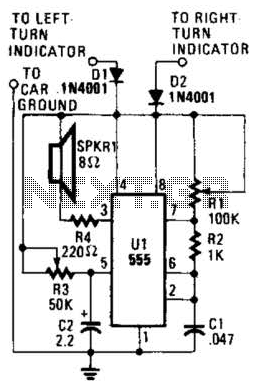
This circuit is designed to assist individuals with hearing impairments by generating a tone each time a dashboard turn indicator is activated. The frequency of the tone decreases for the duration that the indicator remains lit.
The circuit operates by monitoring the state of the turn indicator lights, which are typically controlled by a relay or a direct connection to the vehicle's lighting system. When the turn indicator is activated, a signal is sent to the tone generator circuit. This circuit can consist of a simple oscillator, such as a 555 timer configured in astable mode, which produces a square wave output.
The frequency of the output tone can be controlled by varying the resistor and capacitor values in the timing circuit. To achieve the desired effect of a decreasing frequency, a feedback mechanism can be implemented. This can be accomplished by integrating a capacitor that gradually discharges while the indicator is lit, effectively lowering the frequency over time.
Additionally, a transistor can be used to amplify the tone output, ensuring it is audible even in noisy environments. A small speaker or piezo buzzer can be connected to the output of the transistor, providing a clear sound that alerts the user when the turn indicator is active.
Power for the circuit can be drawn from the vehicle's battery, with appropriate voltage regulation to ensure safe operation of the electronic components. A diode may be included to protect against reverse polarity connections.
This circuit not only enhances safety by providing auditory feedback for turn signals but also caters specifically to the needs of those with hearing impairments, allowing for a more inclusive driving experience. This little circuit should be useful to the hearing impaired. It produces a tone each time a dashboard turn indicator lights. The tone drops in frequency for as long asthe indicator is lit.
The circuit operates by monitoring the state of the turn indicator lights, which are typically controlled by a relay or a direct connection to the vehicle's lighting system. When the turn indicator is activated, a signal is sent to the tone generator circuit. This circuit can consist of a simple oscillator, such as a 555 timer configured in astable mode, which produces a square wave output.
The frequency of the output tone can be controlled by varying the resistor and capacitor values in the timing circuit. To achieve the desired effect of a decreasing frequency, a feedback mechanism can be implemented. This can be accomplished by integrating a capacitor that gradually discharges while the indicator is lit, effectively lowering the frequency over time.
Additionally, a transistor can be used to amplify the tone output, ensuring it is audible even in noisy environments. A small speaker or piezo buzzer can be connected to the output of the transistor, providing a clear sound that alerts the user when the turn indicator is active.
Power for the circuit can be drawn from the vehicle's battery, with appropriate voltage regulation to ensure safe operation of the electronic components. A diode may be included to protect against reverse polarity connections.
This circuit not only enhances safety by providing auditory feedback for turn signals but also caters specifically to the needs of those with hearing impairments, allowing for a more inclusive driving experience. This little circuit should be useful to the hearing impaired. It produces a tone each time a dashboard turn indicator lights. The tone drops in frequency for as long asthe indicator is lit.
